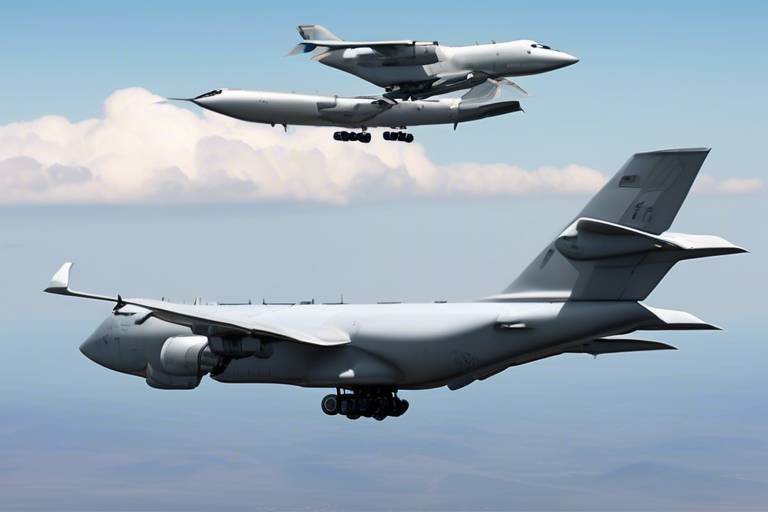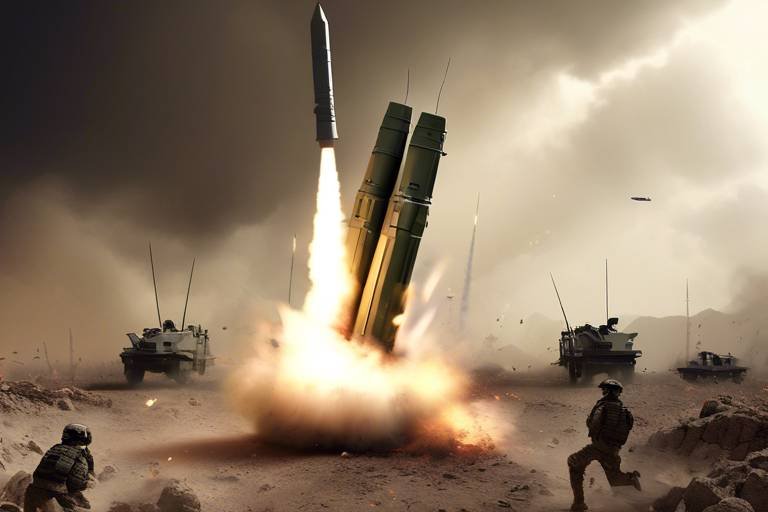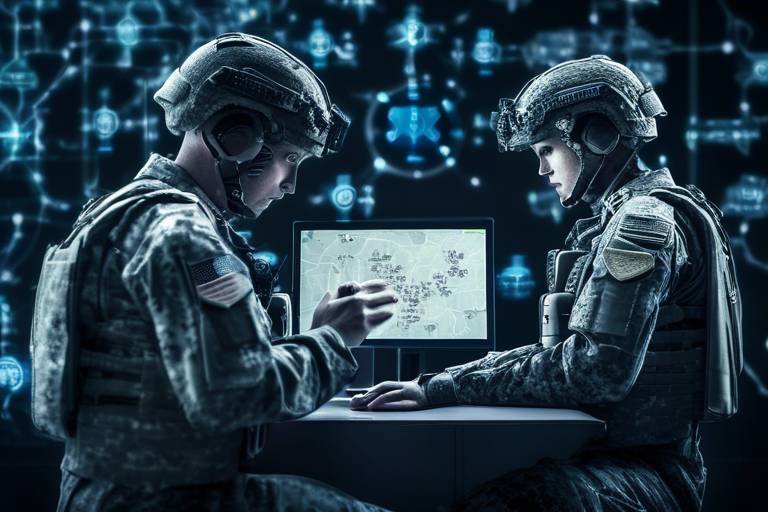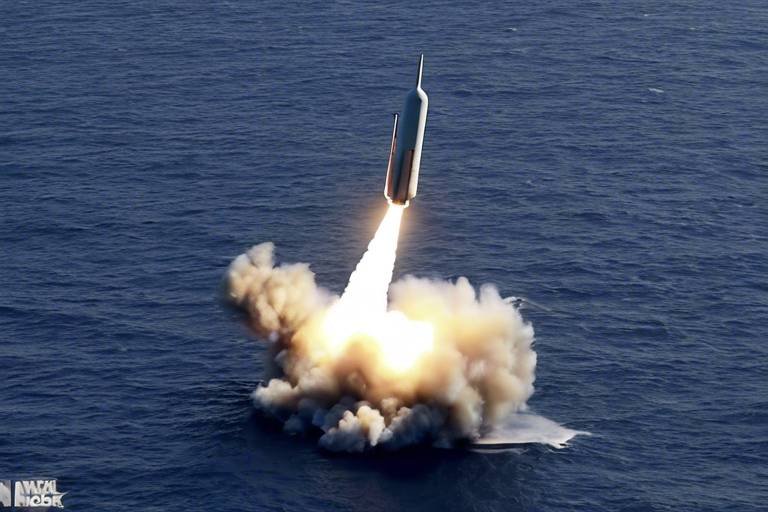How Defense Technology is Transforming Border Security
In an era where global security threats are evolving at an unprecedented pace, it’s crucial for nations to adapt and innovate their border security measures. The advent of defense technology is revolutionizing how countries monitor and control their borders, ensuring safety and efficiency like never before. Imagine a world where surveillance is not just about watching, but about understanding and predicting potential threats. This is not science fiction; it’s the reality we are stepping into.
From drones soaring high above to biometric systems that can recognize faces in the blink of an eye, the landscape of border security is changing dramatically. These advancements do not merely enhance security; they redefine it. Countries are now equipped with tools that allow them to respond not just reactively, but proactively to threats. The integration of these technologies fosters a sense of safety for citizens while presenting a formidable challenge to those who would breach national borders.
As we delve deeper into the specifics of these technologies, we’ll uncover how they work together to create a robust security framework. The use of drones for aerial surveillance, coupled with advanced surveillance systems, ensures that no corner of a border is left unmonitored. Meanwhile, biometric identification systems are streamlining the process of verifying identities, making it faster and more efficient to process individuals at checkpoints. The synergy between these technologies is not just impressive; it’s essential for modern border security.
Moreover, the role of artificial intelligence (AI) cannot be understated. AI is the backbone of many of these innovations, enabling the analysis of vast amounts of data collected from various surveillance sources. This capability enhances threat detection and response times, giving border security personnel the tools they need to act swiftly and decisively. Imagine having a digital assistant that not only alerts you to potential dangers but also helps you make informed decisions based on real-time data. That’s the power of AI in border security.
As we explore these advancements, it’s essential to recognize that they come with their own set of challenges. Budget constraints, privacy concerns, and the need for skilled personnel are just a few hurdles that must be navigated to fully realize the potential of these technologies. However, the benefits far outweigh the challenges when it comes to protecting national interests.
In conclusion, the transformation of border security through defense technology is a testament to human ingenuity and the relentless pursuit of safety. As we look to the future, the possibilities are boundless. Nations that embrace these advancements will not only secure their borders more effectively but also pave the way for a safer global community.
- What are the key technologies used in modern border security?
Key technologies include drones, surveillance systems, biometric identification, and AI-driven analytics that enhance monitoring and response capabilities.
- How does AI improve border security?
AI analyzes data from various sources, improving threat detection and enabling quicker, more informed responses to potential security breaches.
- What challenges do countries face in implementing these technologies?
Challenges include budget constraints, privacy concerns, and the need for skilled personnel to effectively operate and maintain advanced security systems.
- What is the future of border security technology?
The future includes enhanced robotics, advanced communication systems, and further integration of AI, all aimed at improving security and efficiency.
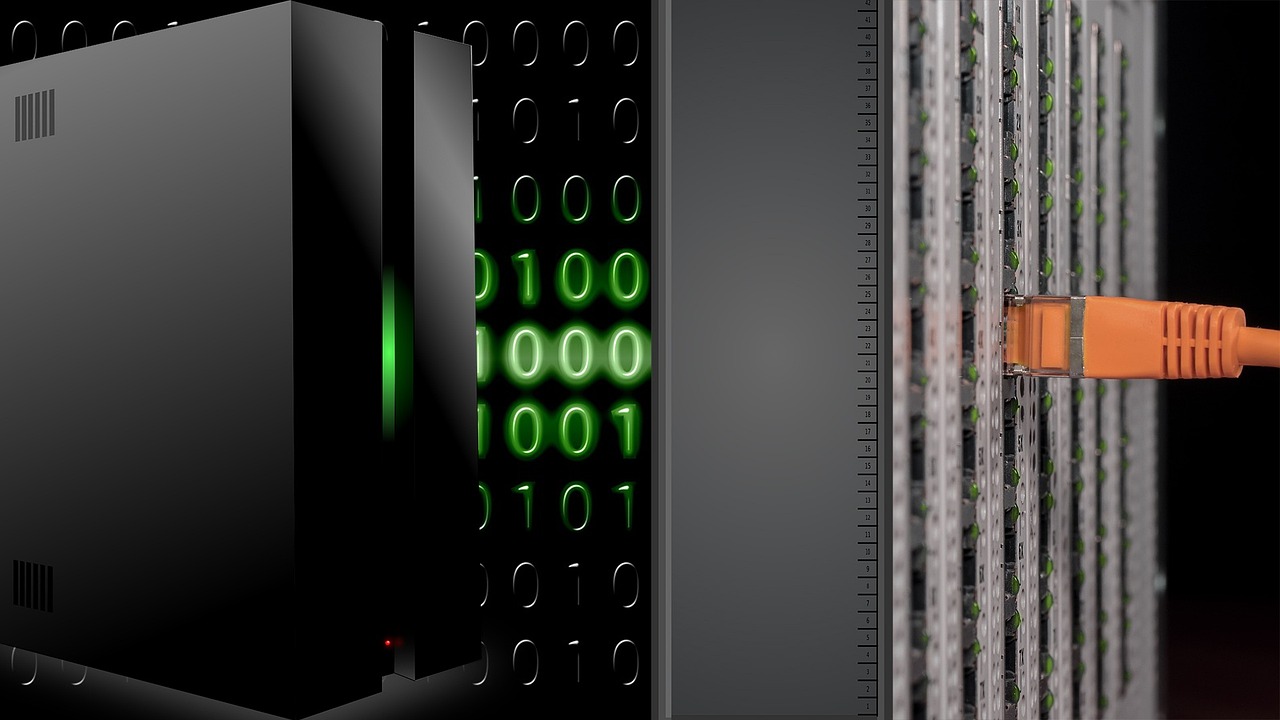
Emerging Technologies in Border Security
In today's fast-paced world, the need for robust border security has never been more critical. Nations are increasingly turning to emerging technologies to fortify their borders and combat the ever-evolving threats posed by illegal crossings and smuggling. This technological revolution is not just about adding new gadgets; it's about transforming how we monitor and control our national frontiers. From drones soaring high above the ground to biometric identification systems ensuring that the right people cross the border, these advancements are reshaping the landscape of security.
One of the most exciting developments is the use of drones. These unmanned aerial vehicles (UAVs) are equipped with high-resolution cameras and thermal imaging technology, allowing them to cover vast areas quickly and efficiently. Imagine having a bird's-eye view of your border, capable of detecting suspicious activities that would be impossible to see from the ground. Drones can patrol remote areas that are difficult to access, providing real-time data that can be crucial for timely interventions.
Another game-changer is the deployment of advanced surveillance systems. These systems combine traditional cameras with cutting-edge technology, such as motion detection and facial recognition. With the ability to analyze video feeds in real-time, these systems can alert security personnel to potential threats as they arise. This proactive approach not only enhances security but also ensures that resources are allocated efficiently. For instance, if a surveillance system detects unusual activity in a specific area, security forces can be dispatched immediately, rather than relying on manual monitoring, which can be slow and inefficient.
Moreover, the integration of biometric identification is revolutionizing border crossings. Biometric systems, which include fingerprint and iris scanning, allow for quick and accurate verification of identities. This technology significantly reduces wait times at border checkpoints, making the crossing experience smoother for legitimate travelers. Imagine walking through a border checkpoint where your identity is verified in seconds, allowing you to continue your journey without unnecessary delays. However, it also raises questions about privacy and data security, which must be addressed as these systems become more widespread.
Additionally, the Internet of Things (IoT) is playing a pivotal role in border security. Smart sensors can be deployed across border areas to monitor environmental conditions and detect unauthorized movements. These sensors can relay information back to central command centers, creating a comprehensive picture of border activity. For example, if a sensor detects unusual vibrations or sounds in a remote area, it can trigger an alert, prompting a closer investigation. This constant monitoring helps in making informed decisions and deploying resources where they are needed most.
With all these technologies at our disposal, the future of border security looks promising. However, it's essential to remember that technology alone cannot solve all our problems. It must be complemented by trained personnel who can interpret the data and make critical decisions. As we embrace these advancements, we must also consider the ethical implications and ensure that security measures do not infringe on individual rights.
In summary, the integration of emerging technologies in border security is not just a trend; it's a necessity. By leveraging drones, advanced surveillance systems, biometric identification, and IoT devices, nations can enhance their border security measures significantly. As we move forward, the challenge will be to balance security with privacy, ensuring that while we protect our borders, we also respect the rights of individuals.

Integration of AI in Border Surveillance
The integration of Artificial Intelligence (AI) in border surveillance is nothing short of a game changer. Imagine a world where vast amounts of data are analyzed in real-time, where every camera and sensor works in harmony to provide a comprehensive view of national borders. This is no longer a futuristic dream; it is a reality that is unfolding before our eyes. AI technologies are being harnessed to enhance the efficiency and effectiveness of border security operations, allowing for quicker responses to potential threats. By utilizing advanced algorithms, AI can sift through enormous datasets to identify patterns and anomalies that human operators might overlook.
One of the most significant advantages of AI in border surveillance is its ability to improve threat detection. Traditional methods of monitoring often rely on human observation, which can be prone to error and fatigue. With AI, the surveillance systems can continuously learn and adapt, making them more proficient at identifying suspicious activities. For instance, if a particular area sees an unusual increase in movement, AI can flag this for further investigation. This capability not only enhances security but also optimizes the allocation of resources, ensuring that personnel are deployed where they are needed the most.
Automated threat detection systems are at the forefront of this technological evolution. These systems leverage machine learning algorithms to analyze video feeds and sensor data in real-time, identifying potential threats without human intervention. This level of automation allows border security personnel to focus on critical tasks rather than monitoring screens for hours on end. Imagine a bustling border checkpoint where AI systems are constantly on alert, ready to notify agents of any irregularities. This leads to a more proactive approach in managing border security, ultimately resulting in safer borders.
Another remarkable application of AI in border security is facial recognition technology. This technology is increasingly being employed at border checkpoints to verify identities quickly and accurately. By comparing faces against a database of known individuals, border agents can expedite the process while maintaining high security standards. The speed at which this technology operates significantly reduces wait times for travelers and enhances the overall efficiency of border control operations. However, this innovation also raises questions about privacy and the ethical implications of surveillance, which must be carefully navigated.
The Internet of Things (IoT) plays a vital role in the integration of AI in border surveillance. Smart sensors equipped with AI capabilities can monitor border areas continuously, providing real-time data that is crucial for timely decision-making. These sensors can detect various environmental changes, such as unusual movements or unauthorized entries, and relay this information to command centers. The synergy between AI and IoT creates a robust surveillance network that enhances situational awareness and allows for rapid responses to emerging threats.
Furthermore, AI-driven data analytics tools are essential for processing and interpreting the vast amounts of information collected from various surveillance sources. By transforming raw data into actionable insights, these tools empower border security agencies to make informed decisions. For example, analyzing trends over time can reveal patterns that help predict future threats, enabling agencies to stay one step ahead of potential breaches. This analytical capability is akin to having a crystal ball that allows agencies to foresee challenges before they escalate.
- How does AI improve border security?
AI enhances border security by automating threat detection, analyzing data in real-time, and improving response times to suspicious activities. - What are the ethical concerns regarding AI in border surveillance?
Ethical concerns include privacy issues, the potential for misuse of surveillance data, and the need for regulations to protect individual rights. - Can AI systems operate without human oversight?
While AI systems can automate many tasks, human oversight is still crucial for critical decision-making and ethical considerations.
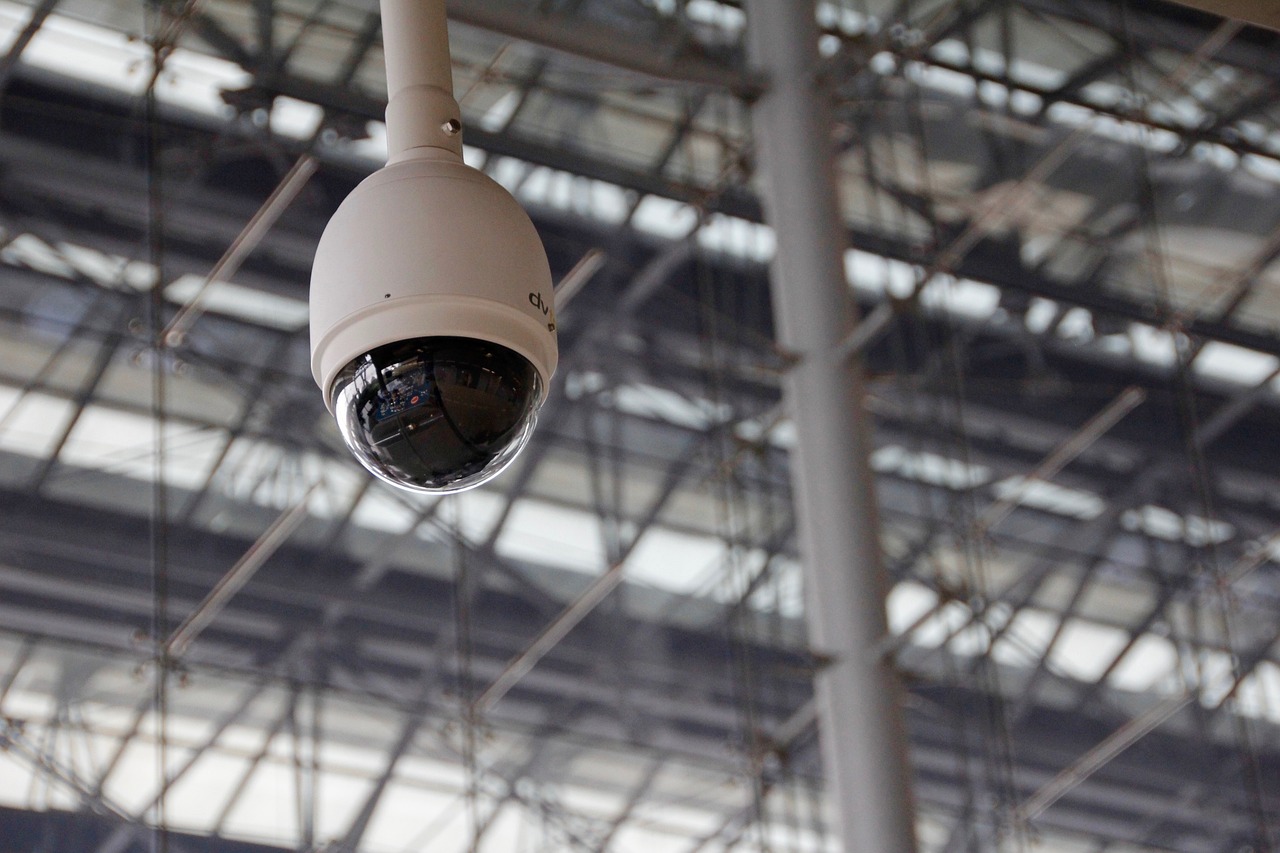
Automated Threat Detection Systems
In an era where technology is advancing at lightning speed, have emerged as a game-changer in the realm of border security. Imagine a vigilant guardian, tirelessly monitoring vast stretches of land and airspace, capable of pinpointing potential threats in real-time. This is not just a fantasy; it’s the reality brought forth by machine learning algorithms that are reshaping how border security personnel respond to suspicious activities.
These systems operate by analyzing data from various sources, such as surveillance cameras, drones, and ground sensors, to identify patterns that may indicate a security breach. By leveraging sophisticated algorithms, they can process this information much faster than any human could, allowing for swift responses to emerging threats. Think of it as having a super-intelligent assistant that never sleeps and is always on the lookout for anything amiss.
One of the most fascinating aspects of automated threat detection systems is their ability to learn and adapt. As they encounter new data, they refine their algorithms, improving their accuracy over time. This means that the more they are used, the better they become at identifying potential risks. For example, if a particular type of intrusion is detected multiple times, the system can adjust its parameters to focus on similar patterns in the future, effectively becoming more proactive rather than reactive.
Moreover, the integration of these systems into existing security frameworks can significantly enhance operational efficiency. Imagine a scenario where border security agents are alerted to a potential threat before it even reaches the border. This proactive approach not only saves time but also resources, as security personnel can be deployed to critical areas based on real-time data rather than relying on outdated intelligence.
However, the implementation of automated threat detection systems is not without its challenges. There are concerns regarding data privacy and the ethical implications of monitoring individuals without their consent. As these systems become more prevalent, it is crucial to establish guidelines that protect individual rights while ensuring national security. Striking the right balance between security and privacy will be a pivotal discussion as we move forward.
In conclusion, automated threat detection systems represent a significant leap forward in border security technology. By harnessing the power of machine learning and real-time data analysis, these systems are not only improving the speed and accuracy of threat detection but also redefining how nations approach border security. As we continue to innovate, it will be essential to address the accompanying challenges to ensure that these advancements serve their intended purpose without infringing on fundamental rights.
- What are automated threat detection systems?
These are advanced systems that utilize machine learning algorithms to analyze data from various sources to identify potential security threats in real-time. - How do these systems improve border security?
By processing vast amounts of data quickly, these systems enable border security personnel to respond swiftly to suspicious activities, enhancing overall security measures. - What challenges do automated threat detection systems face?
Challenges include concerns about data privacy, the need for ethical guidelines, and the financial resources required for implementation and maintenance. - Can these systems adapt over time?
Yes, they utilize machine learning to refine their algorithms based on new data, improving their accuracy and effectiveness in threat detection.

Facial Recognition Technology
Facial recognition technology has emerged as a game-changer in the realm of border security. Imagine standing in a long line at a border checkpoint, only to have your identity verified in mere seconds. This technology leverages advanced algorithms to analyze facial features, allowing for rapid identification of individuals. It’s like having a supercharged bouncer at the entrance of a club, who can instantly recognize VIPs while keeping out unwanted guests.
With the increasing volume of travelers crossing borders daily, the need for efficient and secure identification methods has never been more critical. Traditional methods often involve manual checks, which can lead to long wait times and human errors. In contrast, facial recognition technology streamlines this process. When a traveler approaches a border checkpoint, their face is captured by high-resolution cameras and compared against a database of known individuals. If there’s a match, the system can alert border security personnel almost immediately.
Here are some key benefits of implementing facial recognition technology at border checkpoints:
- Speed: The ability to process travelers quickly reduces congestion at busy borders.
- Accuracy: Enhanced algorithms minimize the chances of misidentification, ensuring that only authorized individuals are allowed entry.
- Security: By integrating facial recognition with other security measures, authorities can better detect and prevent illegal crossings.
However, while the advantages are clear, it’s essential to acknowledge the challenges that come with this technology. Privacy concerns loom large, as citizens may feel uneasy about being constantly monitored. Additionally, the accuracy of facial recognition systems can be affected by factors such as lighting conditions, angles, and even the physical appearance of individuals. These variables can lead to false positives or negatives, which could have serious implications for border security.
As countries continue to invest in this technology, it’s crucial to strike a balance between enhancing security and respecting individual privacy rights. Regulations and guidelines must be established to ensure that facial recognition is used ethically and responsibly. Ultimately, the goal is to create a secure environment that protects citizens without infringing on their freedoms.
Q: How does facial recognition technology work?
A: Facial recognition technology captures an image of a person's face and compares it to a database of known faces using advanced algorithms to identify matches.
Q: Is facial recognition technology safe to use?
A: While it enhances security and efficiency, there are concerns regarding privacy and potential misuse. Regulations are necessary to ensure ethical use.
Q: Can facial recognition technology be fooled?
A: Yes, factors like poor lighting, angles, and disguises can affect the accuracy of facial recognition systems, leading to false positives or negatives.
Q: What are the benefits of using facial recognition at borders?
A: Benefits include faster processing times, improved accuracy in identifying individuals, and enhanced overall security at border checkpoints.

Smart Sensors and IoT Devices
In the ever-evolving landscape of border security, smart sensors and Internet of Things (IoT) devices are becoming game-changers. Imagine a world where every inch of a border is monitored in real-time, providing security personnel with critical data that can be acted upon immediately. This is not just a futuristic dream; it is a reality that is unfolding right before our eyes. These devices are equipped with advanced capabilities that allow them to detect, analyze, and report suspicious activities, making them invaluable assets in the fight against illegal crossings and other threats.
At the core of this technology is the ability to gather data from various sources and transmit it seamlessly to command centers. For instance, smart sensors can monitor environmental conditions, detect movement, and even recognize patterns that indicate potential breaches. When integrated with IoT devices, these sensors can communicate with each other and share information in real-time, creating a comprehensive surveillance network that enhances situational awareness.
One of the most fascinating aspects of IoT devices is their ability to operate autonomously. They can be deployed in remote areas where human presence is minimal, providing a constant stream of data without the need for constant oversight. This not only increases efficiency but also allows border security personnel to focus on response strategies rather than data collection. In essence, these devices act like a vigilant eye, constantly scanning for anomalies and alerting officers when something seems amiss.
Moreover, the integration of smart sensors with machine learning algorithms enables predictive analytics. This means that the system can learn from historical data and improve its threat detection capabilities over time. For example, if a certain area has seen increased activity during specific times of the year, the system can adjust its monitoring intensity accordingly. This proactive approach to border security is akin to having a seasoned detective who can anticipate criminal behavior based on past patterns.
The deployment of these technologies does not come without challenges. Ensuring that the data collected is secure and used ethically is paramount. As we harness the power of smart sensors and IoT devices, we must also navigate the complexities of privacy concerns and data management. However, when implemented thoughtfully, these technologies can significantly enhance border security, making it more efficient and effective.
- What are smart sensors? Smart sensors are devices that collect data from their environment and can transmit this information to other devices or systems for analysis.
- How do IoT devices improve border security? IoT devices enhance border security by providing real-time data, allowing for immediate response to potential threats and improving overall situational awareness.
- What are the challenges of using smart sensors in border security? Challenges include ensuring data security, addressing privacy concerns, and the need for skilled personnel to manage and interpret the data collected.
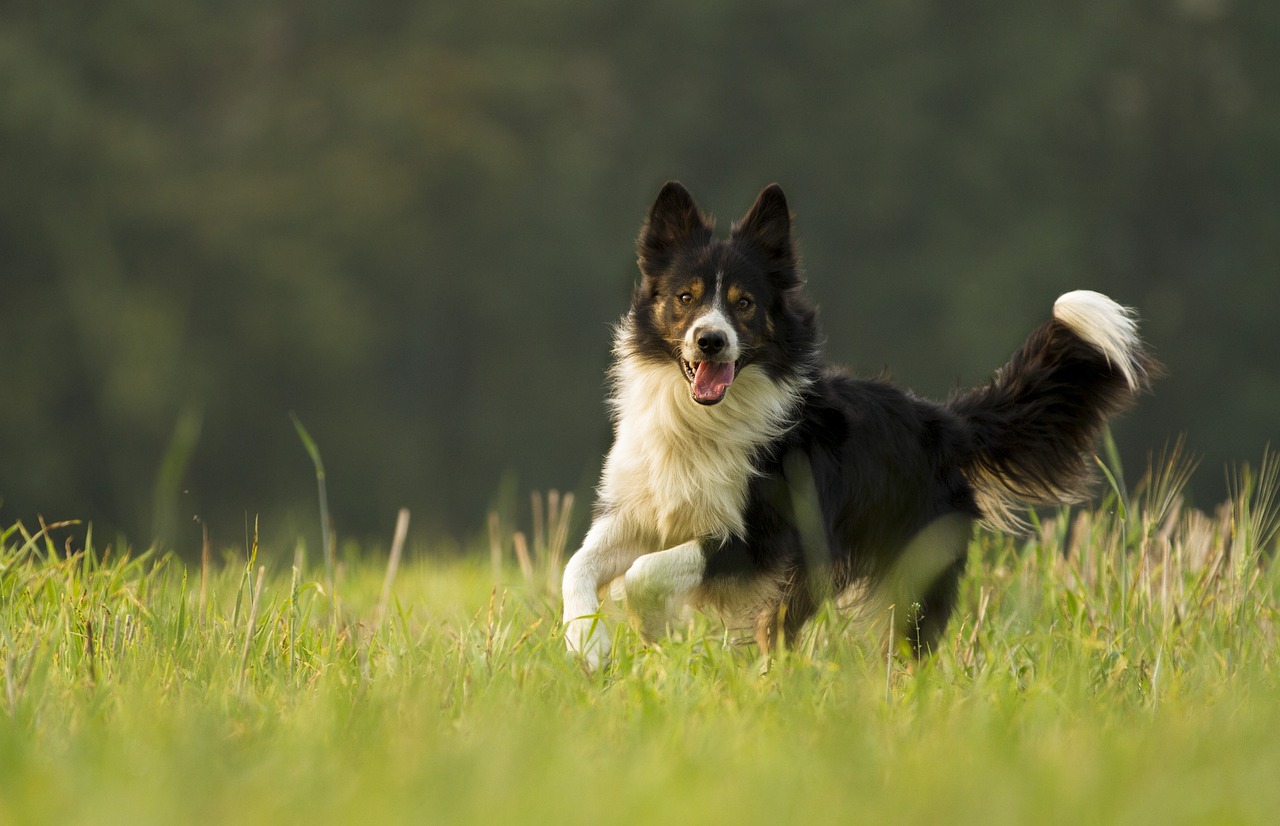
Data Analytics for Improved Decision-Making
In the realm of border security, data analytics has emerged as a game-changer, providing agencies with the ability to sift through mountains of information and extract actionable insights. Imagine trying to find a needle in a haystack; this is akin to what border security personnel face daily. With the sheer volume of data generated from various surveillance systems, manual analysis is no longer feasible. Instead, advanced data analytics tools are stepping in to streamline this process, transforming raw data into clear, comprehensible intelligence that can guide decision-making.
Consider the vast array of information collected through surveillance cameras, drones, and sensor networks. Each piece of data holds potential insights into security threats, but without proper analysis, it’s just noise. Data analytics enables agencies to identify patterns and trends that might otherwise go unnoticed. For instance, by analyzing movement patterns at border crossings, authorities can predict peak times for illegal crossings and allocate resources more effectively. This proactive approach not only enhances security but also optimizes operational efficiency.
Furthermore, the integration of predictive analytics allows border security to anticipate potential threats before they manifest. By employing machine learning algorithms, agencies can analyze historical data and forecast future incidents. This capability is crucial in a world where threats are constantly evolving. The ability to foresee and mitigate risks can make the difference between a secure border and a potential breach.
However, the effectiveness of data analytics hinges on the quality of the data being analyzed. Poor data quality can lead to misguided decisions, which is why agencies must prioritize data integrity and accuracy. This involves not only the collection of data but also its cleansing and validation to ensure that the insights drawn are reliable.
To illustrate the impact of data analytics in border security, consider the following table that outlines key benefits and applications of data analytics in this field:
| Benefit | Application |
|---|---|
| Enhanced Threat Detection | Identifying unusual patterns in border crossings |
| Resource Optimization | Allocating personnel based on predictive analytics |
| Improved Response Times | Real-time data processing for rapid decision-making |
| Risk Assessment | Evaluating potential threats based on historical data |
In conclusion, data analytics is not just a tool; it’s a vital component of modern border security strategies. By leveraging the power of data, agencies can make better-informed decisions, enhancing their ability to protect national borders effectively. As technology continues to evolve, the role of data analytics will undoubtedly grow, paving the way for even more sophisticated security measures in the future.
- What role does data analytics play in border security?
Data analytics helps border security agencies analyze large volumes of information to identify patterns, predict threats, and make informed decisions.
- How does predictive analytics improve border security?
Predictive analytics enables agencies to forecast potential threats based on historical data, allowing for proactive measures to be taken.
- Why is data quality important in analytics?
Poor data quality can lead to inaccurate insights, which can result in misguided decisions and ineffective security measures.
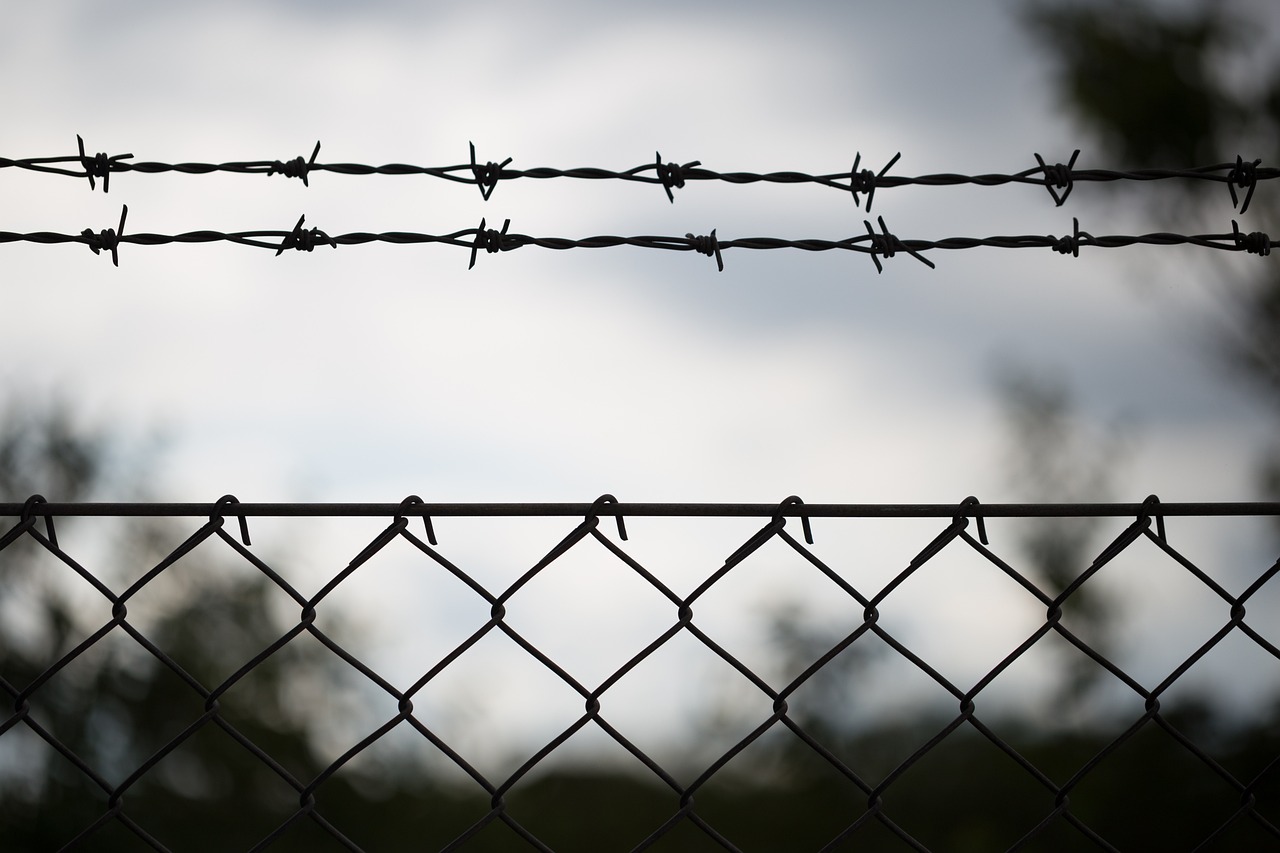
Challenges in Implementing Defense Technologies
As we dive into the world of defense technology and its impact on border security, it’s crucial to acknowledge that the path to innovation is rarely smooth. The implementation of advanced technologies comes with its own set of challenges that can hinder progress and effectiveness. One of the most significant hurdles is budget constraints. Many governments face tight budgets, and allocating funds for cutting-edge technologies can often take a backseat to other pressing needs. This financial limitation can lead to a lack of resources necessary for deploying sophisticated systems that could otherwise enhance border security.
Moreover, the integration of new technologies requires not just money, but also skilled personnel. The rapid advancement in technology means that there’s a constant need for training and development. Without a workforce that is proficient in operating and maintaining these systems, even the best technology can fall short of its potential. This creates a scenario where agencies may have the latest gadgets but lack the expertise to utilize them effectively.
Another critical aspect to consider is the privacy and ethical considerations surrounding surveillance technologies. As nations ramp up their monitoring capabilities, they must also grapple with the implications of such actions on citizens’ rights. The balance between ensuring national security and respecting individual privacy is delicate, and many citizens express concerns about being constantly watched. This has led to debates about the ethical use of technologies like facial recognition and data collection, prompting calls for clear regulations to protect personal freedoms.
Additionally, the rapid pace of technological change can create a sense of uncertainty and resistance among border security personnel. New systems may be met with skepticism, particularly if staff members are comfortable with traditional methods. This resistance can slow down the adoption of innovative solutions and hinder the overall effectiveness of border security operations. It’s essential for agencies to foster a culture of adaptability and continuous learning to overcome this barrier.
In summary, while the potential of defense technologies to enhance border security is immense, the challenges of budget limitations, the need for skilled personnel, privacy concerns, and resistance to change must be addressed. As nations navigate these issues, the focus should be on creating a balanced approach that leverages technology while safeguarding individual rights and ensuring that personnel are equipped to manage these advanced systems effectively.
- What are the main challenges in implementing defense technologies for border security?
Budget constraints, the need for skilled personnel, privacy concerns, and resistance to change are the primary challenges faced. - How can governments address budget constraints?
Governments may need to prioritize spending and explore partnerships with private sectors to fund advanced technologies. - What role does privacy play in border security technology?
Privacy is a significant concern, as advanced surveillance can infringe on individual rights, necessitating regulations to protect citizens. - How important is personnel training in the adoption of new technologies?
Training is crucial; without skilled personnel, even the best technology can be underutilized or mismanaged.
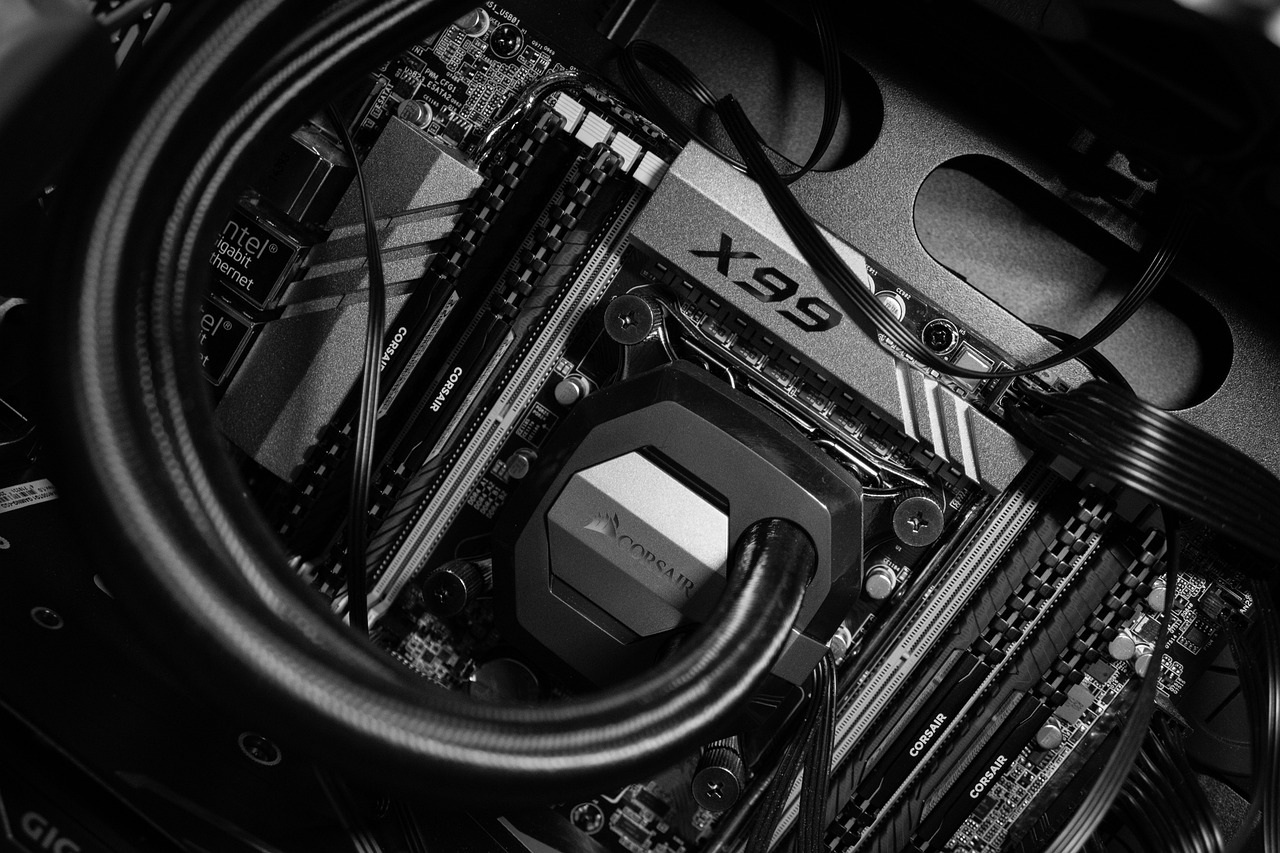
Budget and Resource Allocation
When it comes to implementing cutting-edge defense technologies for border security, the question of is a significant hurdle that many nations face. Imagine trying to build a high-tech fortress with a budget that barely covers the essentials; it’s a frustrating scenario that can impede progress. As nations strive to enhance their border security measures, the financial constraints often lead to difficult decisions about which technologies to prioritize and how to allocate limited resources effectively.
One of the primary challenges is that advanced technologies, such as drones, surveillance systems, and AI-driven analytics, come with hefty price tags. For instance, a single drone can cost anywhere from tens of thousands to millions of dollars, depending on its capabilities. Therefore, governments must conduct a careful assessment of their budget priorities. This often involves weighing the immediate need for enhanced security against other pressing issues like healthcare, education, and infrastructure. The dilemma is akin to a family deciding whether to invest in a new car or save for a home renovation; both choices are important, but which one takes precedence?
Moreover, the allocation of resources is not just about finances; it also involves human capital. Skilled personnel are essential for operating and maintaining these sophisticated systems. Unfortunately, many countries struggle with a shortage of trained professionals who can effectively manage and interpret the data generated by these technologies. As a result, some nations might invest in advanced systems but fail to deploy them effectively due to a lack of expertise. This situation can lead to a significant waste of resources, making it crucial for governments to not only allocate funds but also invest in training programs to develop a skilled workforce.
To illustrate the financial aspects further, consider the following table that outlines some common border security technologies and their estimated costs:
| Technology | Estimated Cost | Maintenance Cost (Annual) |
|---|---|---|
| Drones | $50,000 - $1,500,000 | $10,000 - $100,000 |
| Surveillance Cameras | $1,000 - $50,000 | $500 - $5,000 |
| Facial Recognition Systems | $20,000 - $300,000 | $2,000 - $20,000 |
| AI Analytics Software | $10,000 - $500,000 | $1,000 - $10,000 |
In conclusion, the challenge of in border security is a complex puzzle that requires careful consideration and strategic planning. Governments must balance the immediate needs for security with long-term investments in technology and human resources. As they navigate these challenges, it’s vital to remember that effective border security is not just about having the latest gadgets; it’s about making smart, informed decisions that protect national interests while ensuring the rights and privacy of citizens are respected.
- What are the main technologies used in border security? Drones, surveillance systems, biometric identification, and AI analytics are among the key technologies employed.
- How do budget constraints affect border security? Limited budgets can hinder the adoption of advanced technologies and the hiring of skilled personnel necessary for effective implementation.
- What role does AI play in border security? AI helps analyze vast amounts of data from surveillance systems, improving threat detection and response times.
- Are there privacy concerns related to border security technologies? Yes, the use of surveillance technologies raises significant privacy and ethical concerns that need to be addressed through regulations.
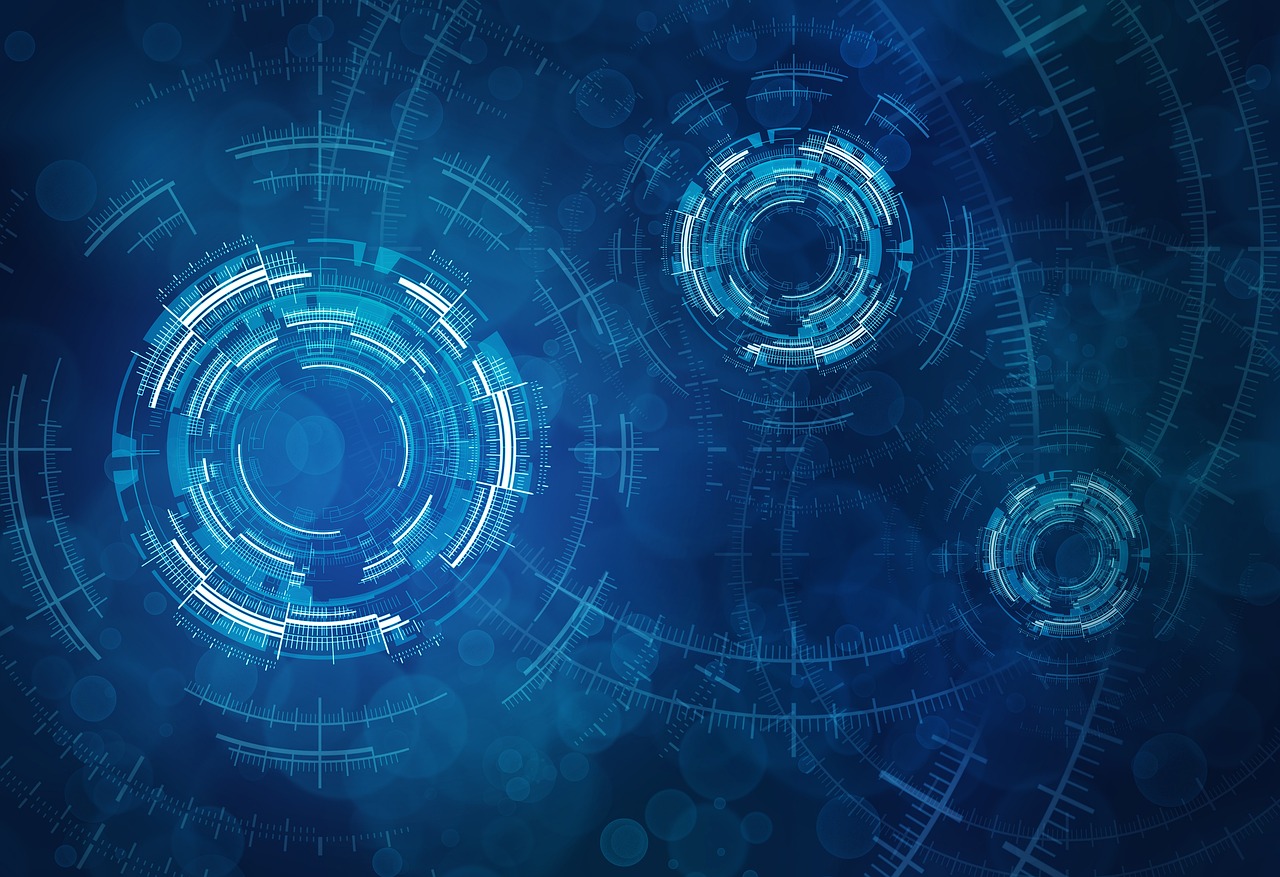
Privacy and Ethical Considerations
As we dive deeper into the realm of advanced border security technologies, one cannot overlook the significant that accompany these innovations. The integration of surveillance systems, biometric identification, and AI-driven analytics raises crucial questions about the balance between national security and individual rights. Are we sacrificing our privacy for the sake of safety? This dilemma is at the forefront of discussions among policymakers, technologists, and the general public.
One major concern is the extent to which surveillance technologies can infringe upon personal privacy. With the capabilities of modern systems, such as facial recognition and continuous monitoring through drones and smart sensors, there is a real risk of mass surveillance. Citizens may find themselves constantly watched, leading to a feeling of unease and distrust towards their own government. It's essential to establish clear guidelines and regulations that define the boundaries of surveillance to ensure that these technologies are used responsibly and ethically.
Moreover, the ethical implications of using such technologies cannot be ignored. For instance, who is held accountable if a surveillance system misidentifies an individual, leading to wrongful detentions or accusations? This raises questions about the reliability of technology and the potential for bias within AI algorithms. Studies have shown that some facial recognition systems have higher error rates for people of color, which could lead to discriminatory practices at border checkpoints. Addressing these biases is crucial to ensuring fair treatment for all individuals, regardless of their background.
In addition to these concerns, there is the matter of informed consent. Many citizens may not be aware of how their data is being collected and used by border security agencies. Transparency is key in fostering trust between the public and the authorities. Governments need to communicate clearly about what data is collected, how it is stored, and who has access to it. This transparency can help alleviate fears and promote a sense of security among citizens.
As we move forward, it is vital to engage in ongoing discussions about the intersection of technology, privacy, and ethics. Policymakers must work alongside technologists and ethicists to create frameworks that protect individual rights while still enhancing national security. Balancing these interests is not just a technical challenge; it is a moral imperative that will shape the future of border security.
- What are the main privacy concerns related to border security technologies?
Privacy concerns include mass surveillance, data misuse, and the potential for bias in facial recognition systems. - How can governments ensure ethical use of surveillance technologies?
Governments can establish clear regulations, promote transparency, and engage in public discussions to address ethical concerns. - What role does informed consent play in the use of border security technologies?
Informed consent ensures that citizens are aware of how their data is being collected and used, promoting trust between the public and authorities.
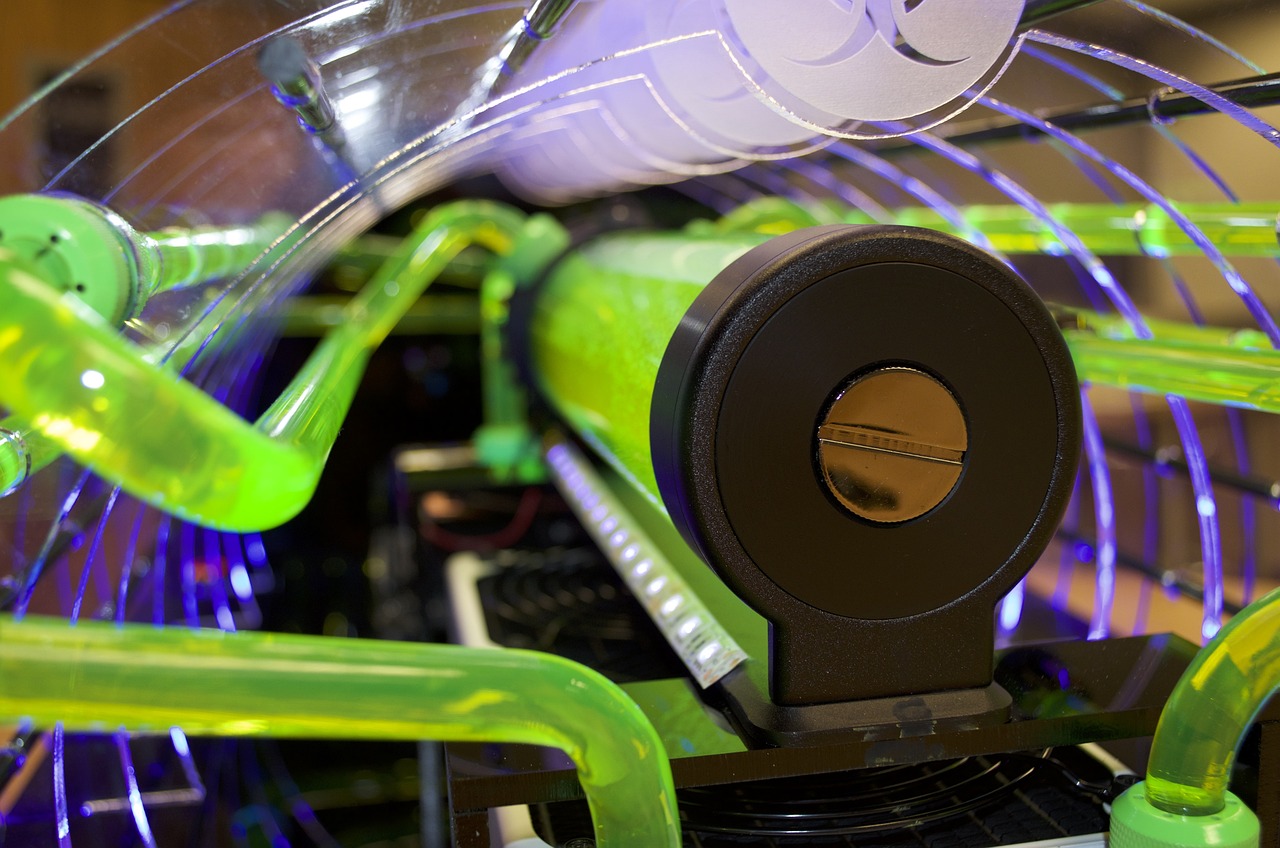
Future Trends in Border Security Technology
The landscape of border security is evolving at a breakneck pace, driven by innovations that promise to redefine how nations protect their boundaries. As we peer into the future, several key trends are emerging that will likely shape the next generation of border security technologies. Imagine a world where robotics and advanced communication systems work in harmony, ensuring that borders are not just monitored but actively defended against a myriad of threats.
One of the most exciting prospects is the integration of autonomous robotic systems. These robots can patrol border areas, equipped with advanced sensors and cameras, capable of detecting unusual activities that might indicate illegal crossings or smuggling attempts. Picture a fleet of drones soaring above remote border regions, relaying real-time data back to control centers, where AI algorithms analyze the information to identify potential threats. This synergy of robotics and AI could drastically reduce the response time of border security personnel, allowing them to act swiftly and effectively.
Moreover, the future will likely see a significant enhancement in communication technologies. With the advent of 5G and beyond, border security agencies will be able to transmit vast amounts of data almost instantaneously. This rapid communication will facilitate better coordination among various security agencies, ensuring that information flows seamlessly. In high-stakes situations, where every second counts, having a reliable communication network can make all the difference.
Another trend to watch is the growing reliance on biometric technologies. Although facial recognition is already in use, the future may bring even more sophisticated methods of biometric verification, such as iris scanning and behavioral biometrics. These technologies will not only enhance security but also streamline the process of identity verification at border checkpoints, reducing wait times while ensuring that only authorized individuals cross national boundaries.
Additionally, the concept of a smart border is gaining traction. This involves the integration of various technologies, such as IoT devices, smart sensors, and data analytics, to create a comprehensive security ecosystem. For instance, smart sensors could be deployed along borders to monitor environmental changes, detect unauthorized movements, and provide actionable intelligence to border security teams. Imagine a scenario where a sudden change in temperature or sound triggers an alert, prompting immediate investigation.
To further illustrate these advancements, consider the following table that highlights some key technologies and their potential impact on border security:
| Technology | Potential Impact |
|---|---|
| Autonomous Robots | Enhanced patrol capabilities, real-time threat detection |
| 5G Communication | Faster data transmission, improved coordination among agencies |
| Advanced Biometric Systems | Faster and more secure identity verification |
| Smart Sensors | Continuous monitoring, proactive threat detection |
As we look ahead, it is clear that the future of border security technology is not just about adopting new tools but also about rethinking how these tools can be integrated into a cohesive strategy. The challenges posed by evolving threats demand a proactive and adaptive approach, one that leverages the best of what technology has to offer. The potential for enhanced security, efficiency, and effectiveness is immense, and as nations invest in these technologies, the landscape of border security will undoubtedly transform.
- What are the main technologies shaping the future of border security?
Key technologies include autonomous robots, advanced communication systems, biometric technologies, and smart sensors. - How will AI impact border security?
AI will enhance data analysis, allowing for quicker threat detection and more informed decision-making. - What are the privacy concerns associated with these technologies?
As surveillance increases, there are valid concerns about the potential for invasion of privacy and the ethical implications of monitoring citizens. - Will these technologies replace human border security personnel?
While technology will augment and enhance security measures, human oversight will remain crucial in managing and interpreting the data.
Frequently Asked Questions
-
What are the latest technologies used in border security?
Border security is evolving rapidly with the introduction of cutting-edge technologies such as drones, surveillance systems, and biometric identification. These technologies enable nations to monitor their borders more effectively, ensuring a robust defense against illegal activities.
-
How does AI enhance border surveillance?
Artificial Intelligence plays a pivotal role in analyzing vast datasets from surveillance systems. By leveraging machine learning algorithms, AI improves threat detection and response times, allowing border security personnel to act swiftly in critical situations.
-
What is automated threat detection?
Automated threat detection systems utilize advanced algorithms to identify potential threats in real-time. This technology enables border security teams to respond promptly to suspicious activities, significantly enhancing overall security measures.
-
How is facial recognition technology used at borders?
Facial recognition technology is increasingly implemented at border checkpoints to verify identities quickly and accurately. This not only reduces wait times but also strengthens security protocols against illegal crossings.
-
What role do smart sensors and IoT devices play in border security?
The Internet of Things (IoT) facilitates the deployment of smart sensors that continuously monitor border areas. These devices provide critical data that aids in timely decision-making and effective resource allocation for border security operations.
-
What challenges do agencies face when implementing these technologies?
While advanced technologies offer numerous benefits, agencies often encounter challenges such as budget constraints, privacy issues, and the need for skilled personnel to operate these systems effectively. Addressing these challenges is crucial for successful implementation.
-
How do budget constraints affect border security technology?
Financial limitations can significantly hinder the adoption of cutting-edge technologies. Agencies must carefully assess their budget priorities and allocate resources wisely to ensure effective border security measures.
-
What are the privacy concerns related to surveillance technologies?
The use of surveillance technologies raises significant privacy issues, prompting discussions about ethical implications and the need for regulations to protect individual rights. Balancing security needs with privacy rights is a critical concern for many nations.
-
What future trends can we expect in border security technology?
Looking ahead, emerging trends such as enhanced robotics and advanced communication systems are expected to further transform border security. These innovations promise to provide even more effective solutions against evolving threats.




